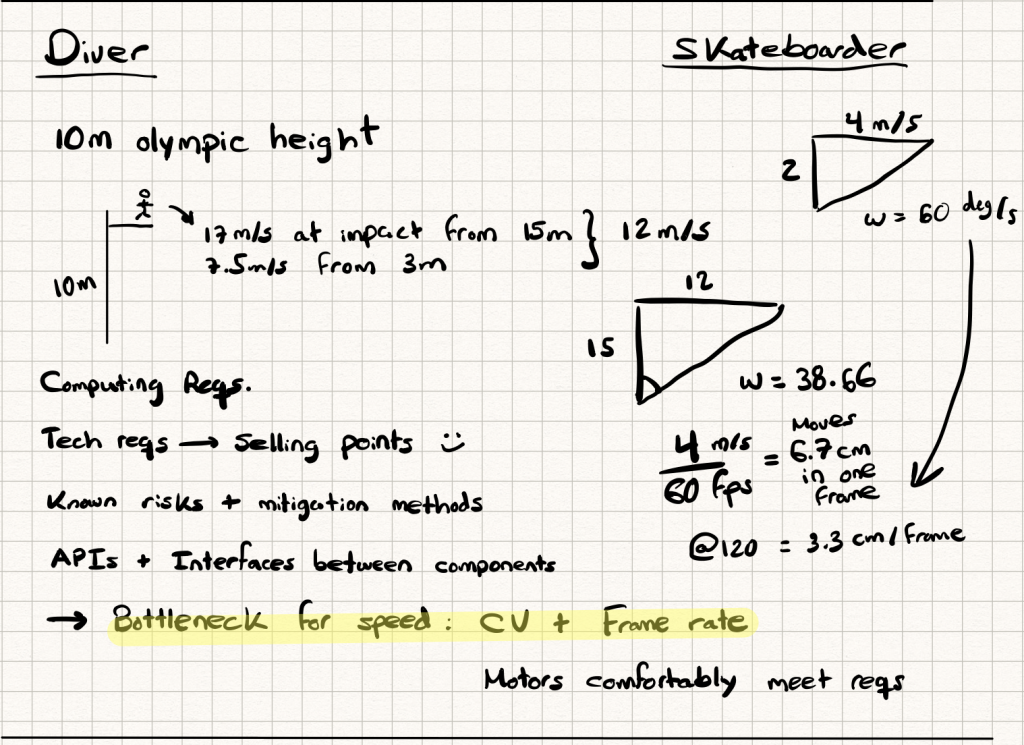
Documentation: Use Cases > Goals > Requirements > Solutions
- Overview: After recognizing that our team had been moving from one implementation to another, changing our project scope, objectives, specifications with each switch, we made the decision to re-centralize our Concept phase approach with a greater emphasis on goals, as recommended by Robert Colwell in The Pentium Chronicles. My focus for this week was to push forward this concentration on process as we entered the Design Review phase of the project, with intentions of using the outcomes of this organization as the core content of the upcoming Design Review presentation.
- Structure: First, the scope of the project was outlined as a means of accomplishing two principal Use Cases: Lecture Filming and Action Shots. These two cases, each with their own challenges for accomplishment, guided the generation of Goals for the development process.
- All Goals were split up among the three principal subsystems of the project: Computer Vision, Mechanical, and System Control, each led by a member of the team whose areas of expertise best complemented its development.
- From each of these Goals, a set of Requirements were set as a means of measuring success in accomplishing each Goal. All Requirements were generated from in-depth calculations using the most difficult set of restrictions from one of the two Use Cases. For example, a vertical (tilt) servo rotation of 38.66 (deg/s) @ full camera load was calculated with the Action Shot Use Case for filming a diver at from the highest college distance (10m) hitting the water at 12 m/s and the camera filming this from a directly horizontal perspective (right above the water level on the pool floor at 15 meters away from the diver’s point of impact). Our ability to meet these requirements and integrate them into a cogent, well-interacting product will determine our success in developing this project.
- From each set of Requirements, a Solution point was generated to indicate, if not already evident, how we will begin to achieve the objective. Although this section is currently being finalized, with certain unresearched points barring this, several points have already guided and changed our design. For example, our Goal of ensuring smooth horizontal/vertical camera motion has led to a noise-reducing tracking algorithm addition of restricting tracking movement to when targets exit a boundary of free space within the camera frame that they are allowed to move freely within, whose size should be user-determined based on the specifications they intend for the type of video they hope to take.
- Conclusively, although this document is guaranteed subject to change over time as the building process begins and the feasibility of different theories change, we expect that these guidelines will organize, direct, and inform the entire future of our engineering Capstone process.

0 Comments